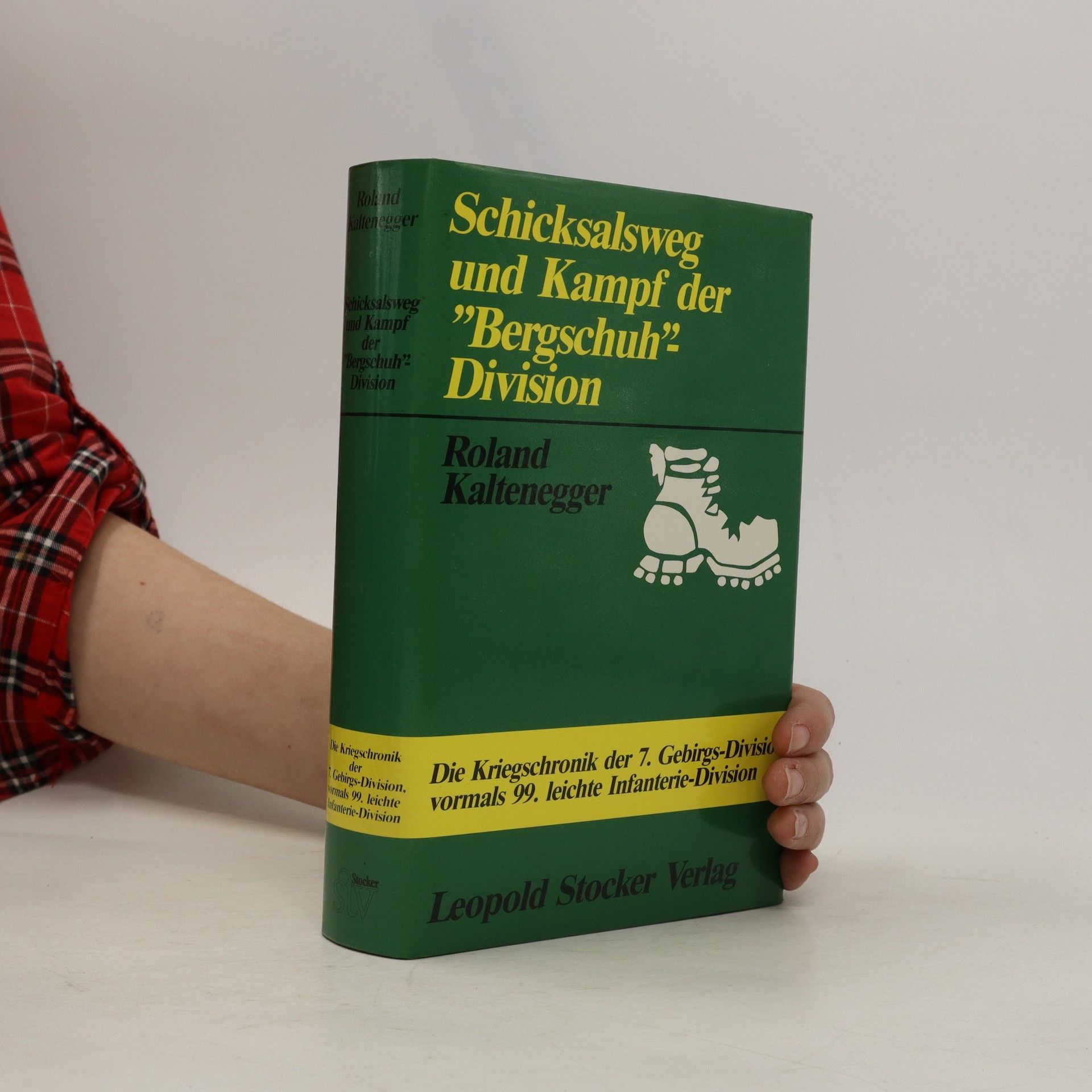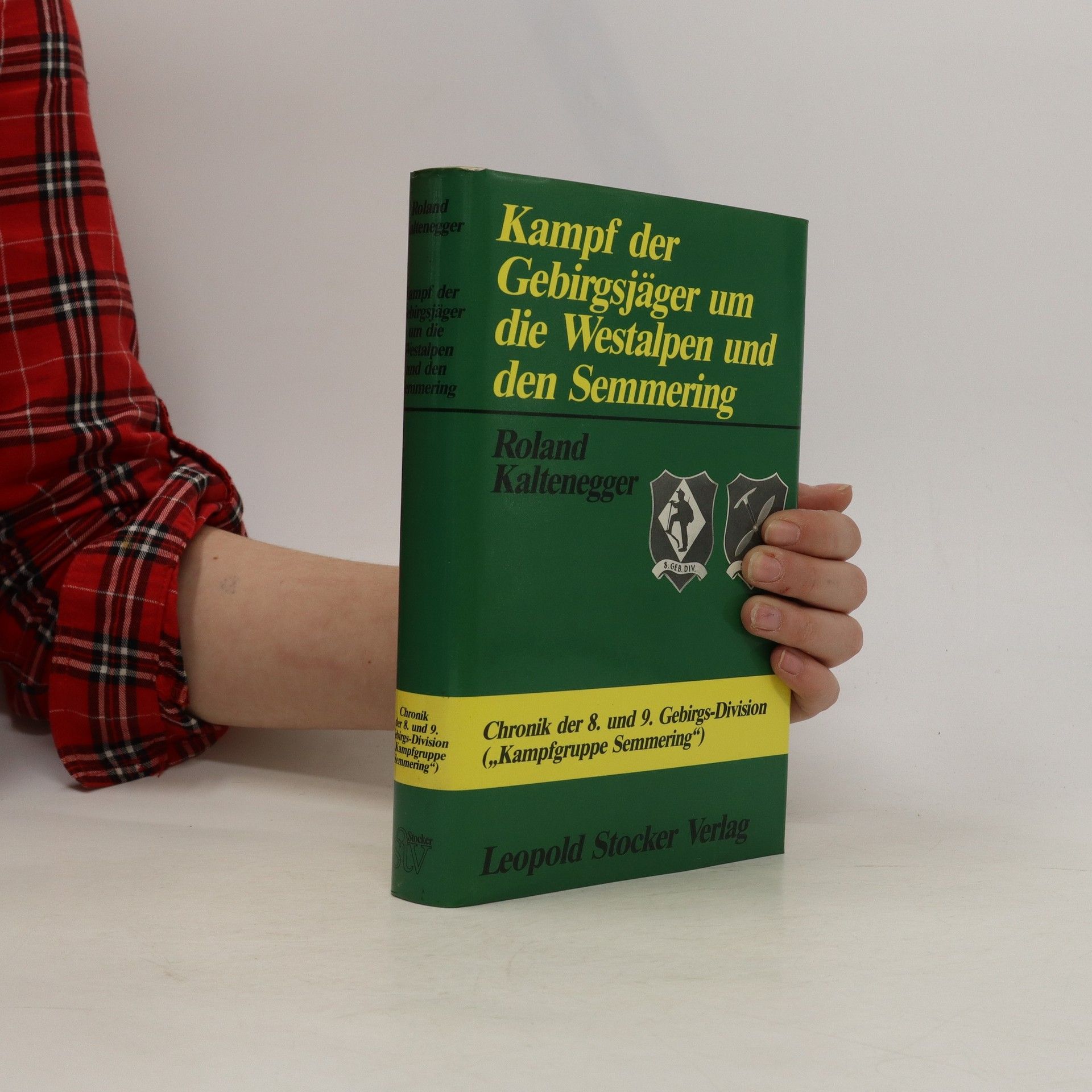V roce 1935 přišla hodina zrodu německých horských vojsk pro 2. světovou válku. Z několika horských jednotek tzv. armády v síle 100 000 mužů a v horách zkušených příslušníků bavorské zemské policie, vznikla první jednotná brigáda. Do roku 1945 postavilo pozemní vojsko celkem 11 horských divizí a další samostatné prapory a jednotky. Roland Kaltenegger popisuje v této knize jejich nasazení ve skalách, tundře a na věčném ledu v letech 1939 až 1945. Horští myslivci bojovali převážně v těch nejtvrdších klimatických podmínkách a v ohniscích válečného dění na Balkáně, na Krétě, u Ledového moře, v karelském pralese, na Kavkazu, v tundře Laponska, na Monte Cassinu a nakonec v zimních západních Alpách. Tuto velmi zajímavou kapitolu dějin německé armády doplňují četné fotografie, mapky a náčrty.
Roland Kaltenegger Knihy



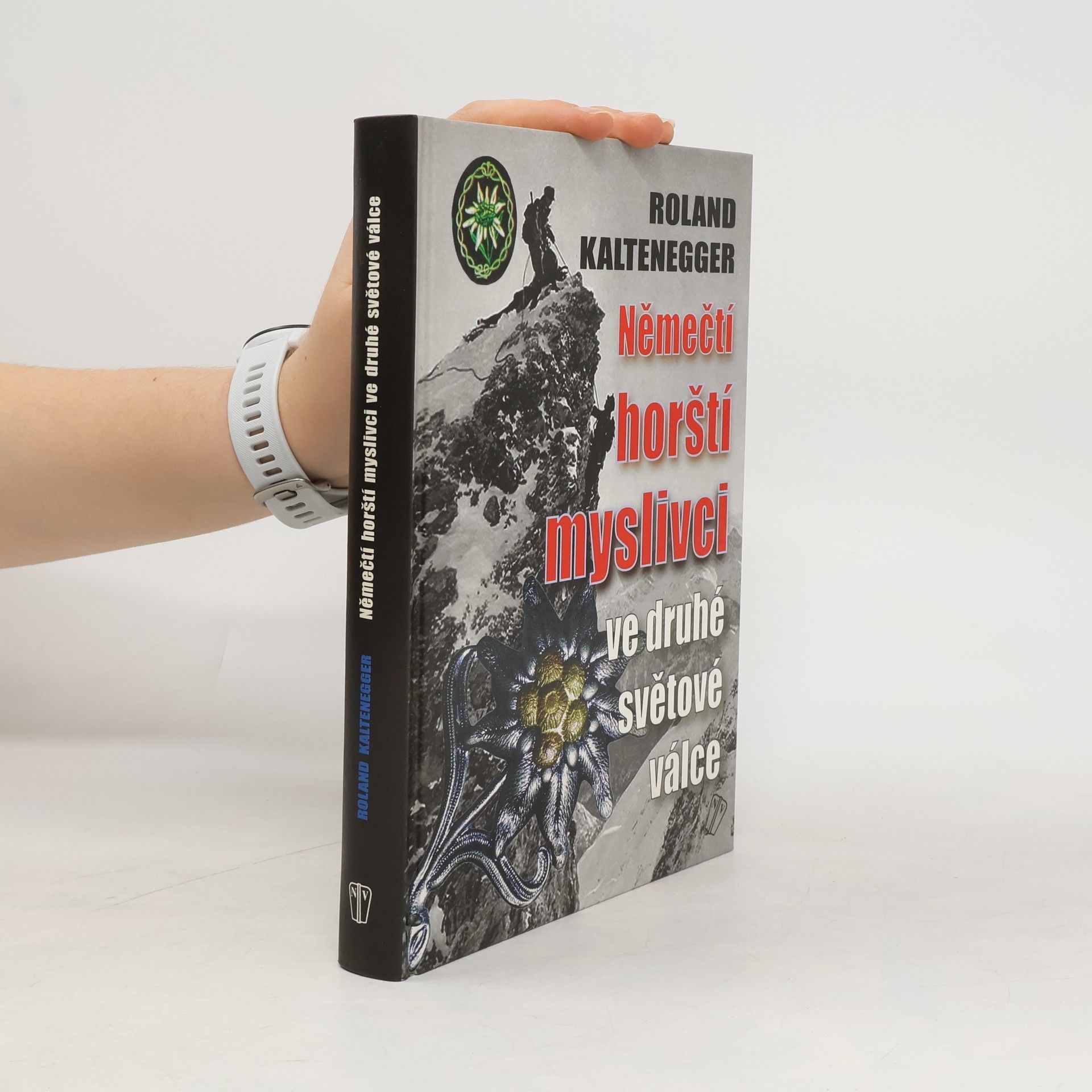
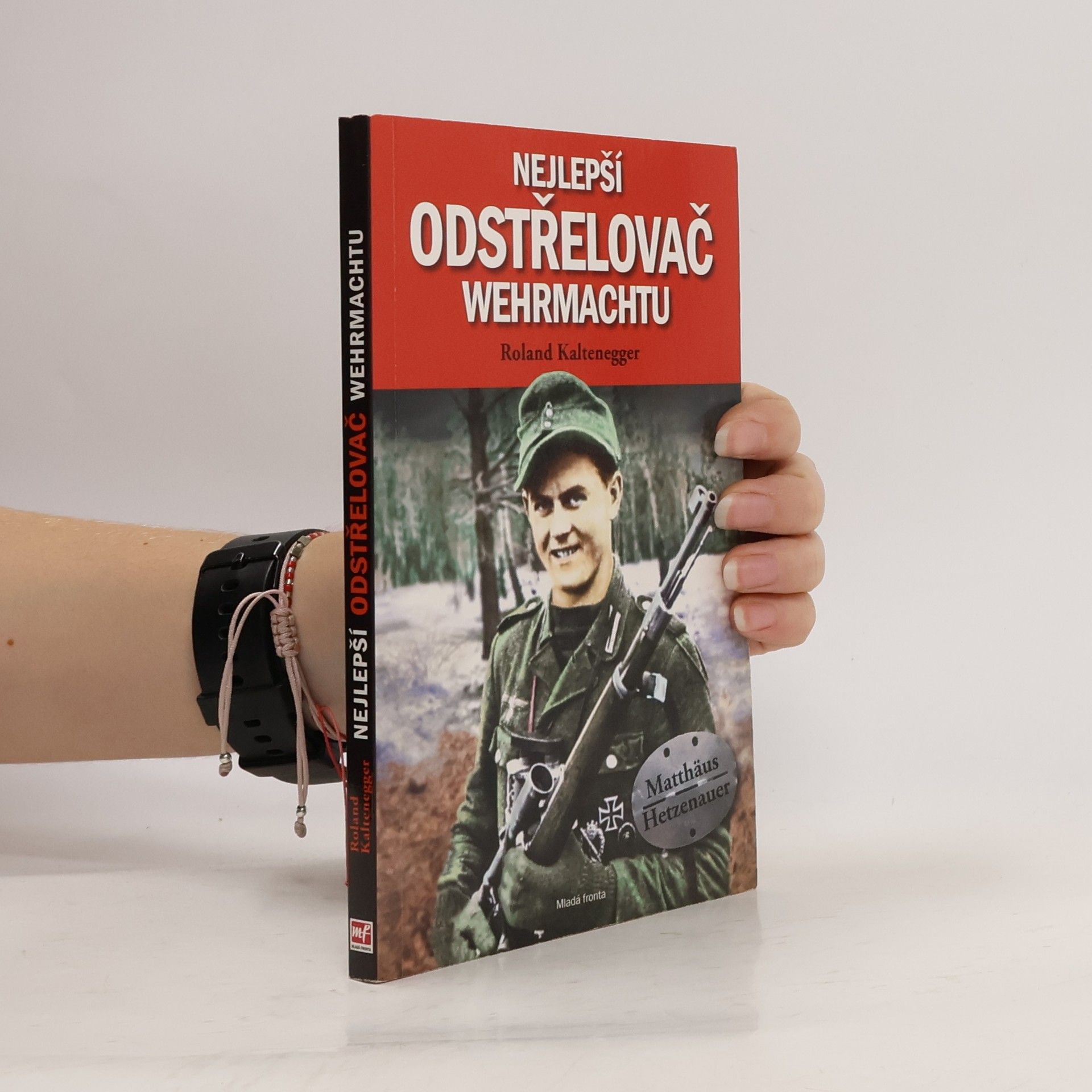
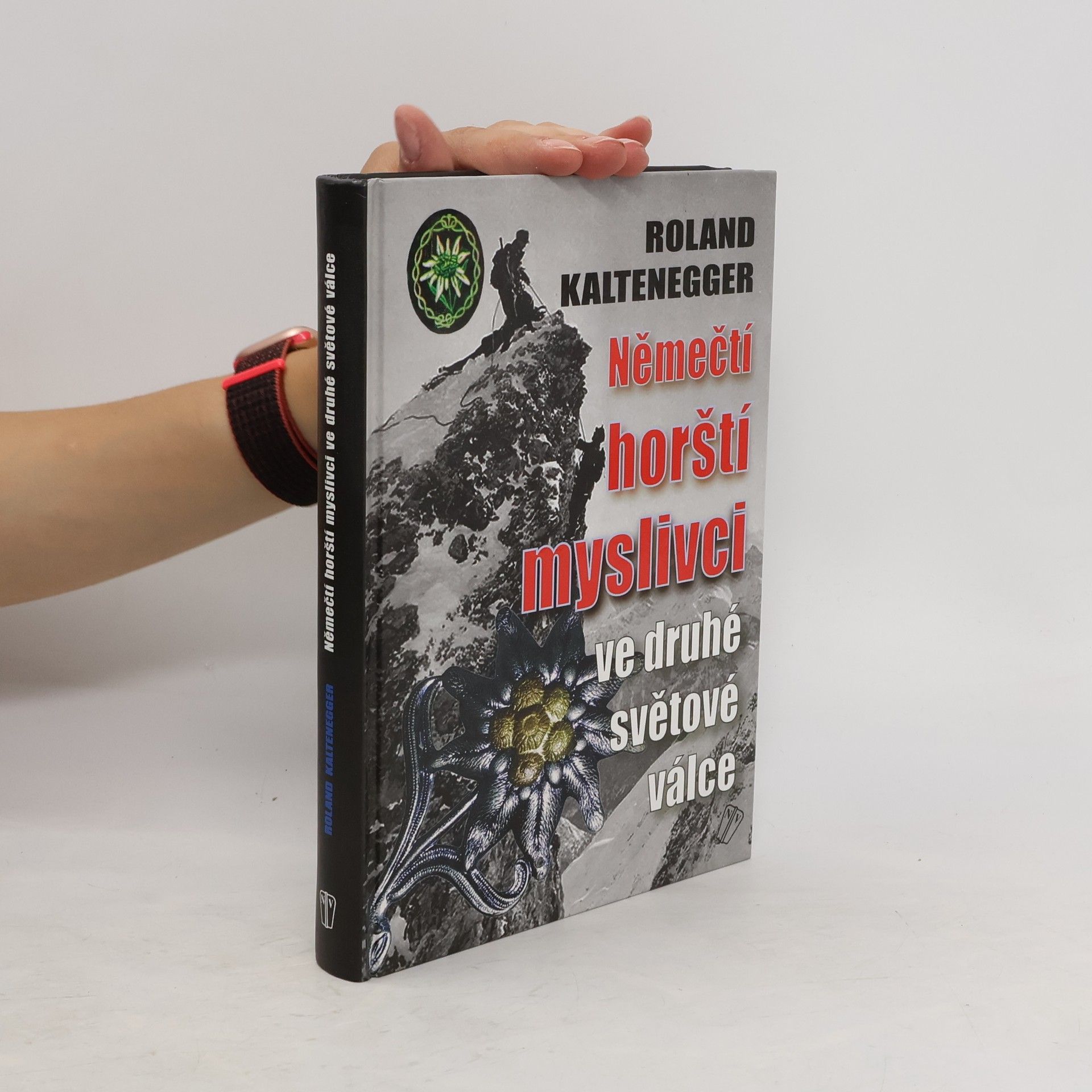
Nejlepší odstřelovač wehrmachtu. Matthäus Hetzenauer
- 87 stránek
- 4 hodiny čtení
Když Matthäus Hetzenauer (1924–2004), rodák z tyrolského Brixenu, na podzim 1942 narukoval do německého wehrmachtu, nejprve to vypadalo, že z něj bude střelec z minometu. Na jaře 1944 však tento vášnivý lovec nastoupil do školy odstřelovačů v Seetalerských Alpách. V červenci 1944 byl přidělen k 144. pluku horských myslivců, v jehož řadách prodělal těžké ústupové boje na východní frontě – a s 345 nárokovanými zásahy se stal bezkonkurenčně nejúspěšnějším odstřelovačem německé branné moci. Kniha vojenského historika Rolanda Kalteneggera představuje první pokus o ucelený životopis tohoto fenomenálního střelce a pozoruhodný doplněk bestsellerových vzpomínek Henzenauerova spolubojovníka a přítele Josefa „Seppa“ Allerbergera Na mušce lovce.
First biography of a sniper awarded the Knight's Cross of the Iron Cross.
Schicksalsweg und Kampf der "Bergschuh"-Division
- 359 stránek
- 13 hodin čtení
Die 7. Gebirgs-Division war 1941 durch Auffüllung mit vorwiegend österreichischen Gebirgseinheiten aus der bayrisch-fränkischen 99. Leichten Infanterie-Division gebildet worden und zählte somit zur jüngeren Generation der deutschen Gebirgstruppe. Ihr Kampfweg führte sie 1941 zunächst nach Osten über Wolhynien an den Styr, zum Djnepr bis Kiew, später mit Teilen bis vor Leningrad in den Raum Narwa, an den Lagoda- und Ilmensee, ehe sie endgültig im Herbst 1942 an die finnische Front nach Karelien kam, wo sie im Kiestinki- und Uchta-Abschnitt bis zur finnischen Kapitulation im Herbst 1944 eingesetzt war. Danach trat die „Bergschuh“-Division ihren Rückmarsch über Rovaniemi nach Norwegen an, wo sie 1945 im Raum Oslo in englische Gefangenschaft kam.
Eduard Dietl wurde am 21. Juli 1890 in Aibling geboren und begann seine militärische Karriere 1909 beim 5. Königlich Bayerischen Infanterieregiment. Im Ersten Weltkrieg diente er als Zugführer einer Maschinengewehrkompanie an der Westfront. 1919 war er Kompanieführer im Freikorps „Franz von Epp“ und beteiligte sich an der Zerschlagung der Münchner Räterepublik. Im selben Jahr trat er der DAP/NSDAP bei und nahm am Hitler-Ludendorff-Putsch teil. 1920 wurde er in die Reichswehr übernommen und nahm 1938 als Kommandeur der 3. Gebirgsdivision am Polenfeldzug teil. Ab 1940 in Norwegen eingesetzt, verteidigte Dietl mit seinen Truppen den strategisch wichtigen Hafen Narvik gegen überlegene alliierte Kräfte. Sein Aufstieg in der nationalsozialistischen Propaganda war rasant, und er wurde als „Held von Narvik“ gefeiert. Als erster Soldat der Wehrmacht erhielt er das Eichenlaub zum Ritterkreuz des Eisernen Kreuzes und wurde 1942 zum Generaloberst befördert. Trotz seiner nationalsozialistischen Überzeugungen lag ihm das Wohl seiner Soldaten am Herzen. Dietl starb 1944 bei einem Flugzeugabsturz, was Hitler zu einer bewegenden letzten Rede veranlasste. Der zweite Teil seiner Biografie beleuchtet sein Leben und militärischen Werdegang von 1933 bis zu seinem Tod.
Eduard Dietl wurde am 21. Juli 1890 in Aibling geboren und begann seine militärische Karriere am 1. Oktober 1909 beim 5. Königlich Bayerischen Infanterieregiment. Er nahm als Zugführer einer Maschinengewehrkompanie am Ersten Weltkrieg teil. 1919 war er Kompanieführer im Freikorps „Franz von Epp“ und beteiligte sich an der Zerschlagung der Münchner Räterepublik. Im selben Jahr trat er der DAP/NSDAP bei und nahm am Hitler-Ludendorff-Putsch 1923 teil. Als Kompaniechef im III. Gebirgsjägerbataillon wurde er 1920 in die Reichswehr übernommen und nahm 1938 als Generalmajor am Polenfeldzug teil. Ab 1940 in Norwegen eingesetzt, verteidigte er erfolgreich den Erzhafen Narvik gegen überlegene alliierte Truppen. Sein Aufstieg war rasant, und die nationalsozialistische Propaganda stilisierte ihn als „Held von Narvik“. Er wurde als erster Soldat der Wehrmacht mit dem Eichenlaub zum Ritterkreuz des Eisernen Kreuzes ausgezeichnet und 1942 zum Generaloberst befördert. Trotz seiner nationalsozialistischen Überzeugungen lag ihm das Wohl seiner Soldaten am Herzen. Dietl starb 1944 bei einem Flugzeugabsturz, was Hitler zu einer emotionalen Rede veranlasste. Der erste Teil dieser Biografie beleuchtet Dietls Leben und militärischen Werdegang von seiner Geburt bis 1933.
